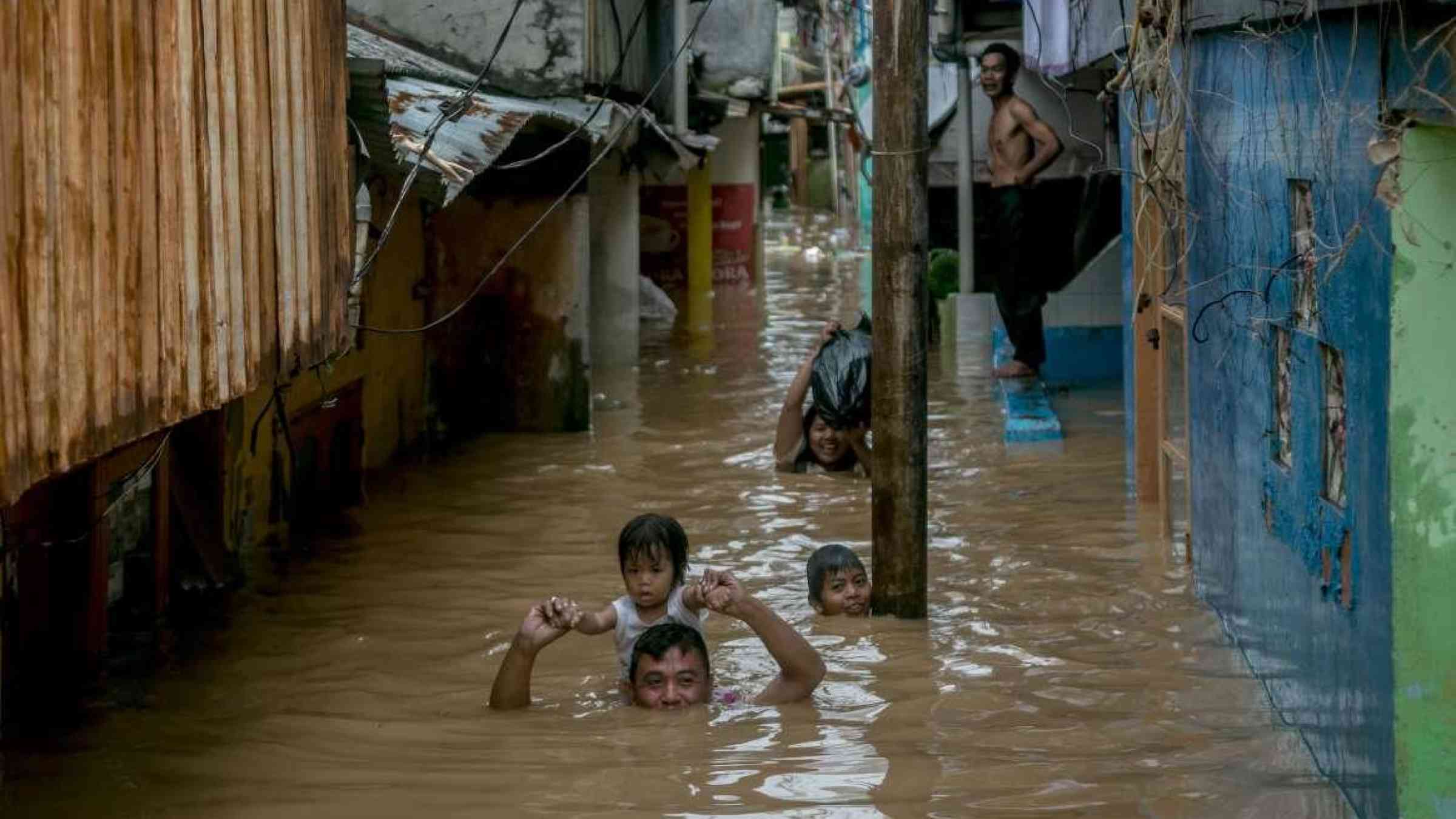Please help us improve PreventionWeb by taking this brief survey. Your input will allow us to better serve the needs of the DRR community.
Climate finance leaves most vulnerable behind - Report

Flood in Jakarta, Indonesia. Ares Jonekson / Shutterstock.com
In 2009, wealthy countries committed to mobilize $100 billion in annual climate finance to assist low-income countries to address climate change by 2020. To mark the deadline of this commitment, this report assesses the last decade of global official development assistance (ODA) invested in building people’s resilience to climate change. We ask two questions:
- Is the international community meeting the commitments it has made?
- Is funding for climate change adaptation and disaster risk reduction going to those people and countries that need it most?
The findings of our analysis were shocking and yet unsurprising; there is insufficient investment in preparing for the impacts of climate change and money is not going to the countries and people that need it most. Using publicly available data to compare climate change adaptation (CCA) and disaster risk reduction (DRR) finance per capita of those living in extreme poverty and climate vulnerability (ND-GAIN index), we found that:
- Climate vulnerable countries are not receiving preferential targeting from donors.
- There is no correlation between the amount of money received for climate change adaptation and disaster risk reduction by people living in extreme poverty and climate-vulnerability of a given country. This means funds are not being targeted according to need.
- The majority of the most climate vulnerable countries received less than $20 per person per year in climate change adaptation financing from 2010–2017.
By 2030, climate change adaptation costs are expected to range between $140 billion and $300 billion a year, and rise to between $280 billion and $500 billion per year by 2050. For more severe scenarios of global warming these figures are expected to be much greater. The longer adaptation and risk reduction efforts are put off by chronic underfunding in CCA and DRR, the more difficult and expensive it will be to manage adaptation needs and the harder it will be to save lives and mitigate suffering.
The gap in CCA and DRR financing must be closed if the global community is serious about protecting the future wellbeing of those people most at risk from climate change.
We risk leaving people behind if we do not better target funding according to need.
The report's recommendations call on donor countries to:
- Build climate change resilience into COVID-19 recovery plans
- Honour existing commitments and invest $50 billion by the end of 2020 to help the world's poorest people cope with climate change;
- Set ambitious new targets for climate finance for the next five years to meet growing needs. Within this, double the climate finance going to the most fragile and climate vulnerable countries;
- Take a long-term investment approach to fragile and climate vulnerable countries, support them to adapt to the impacts of climate change and build resilience to natural hazards.
Explore further
Please note: Content is displayed as last posted by a PreventionWeb community member or editor. The views expressed therein are not necessarily those of UNDRR, PreventionWeb, or its sponsors. See our terms of use
Is this page useful?
Yes No Report an issue on this pageThank you. If you have 2 minutes, we would benefit from additional feedback (link opens in a new window).